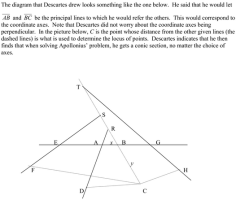shahar
Full Member
- Joined
- Jul 19, 2018
- Messages
- 535
Why the angle between x-axis to y-axis is defined as 90 degrees?
I think that the reason of the question why is not lower than 90 degrees as the reason of lossing information. Right?
But what will happen if the angle will be higher than 90 degree, it also have be lost of information?
What will be if we have defined domain of the graph? Is in this case, it will work?
I think that the reason of the question why is not lower than 90 degrees as the reason of lossing information. Right?
But what will happen if the angle will be higher than 90 degree, it also have be lost of information?
What will be if we have defined domain of the graph? Is in this case, it will work?

